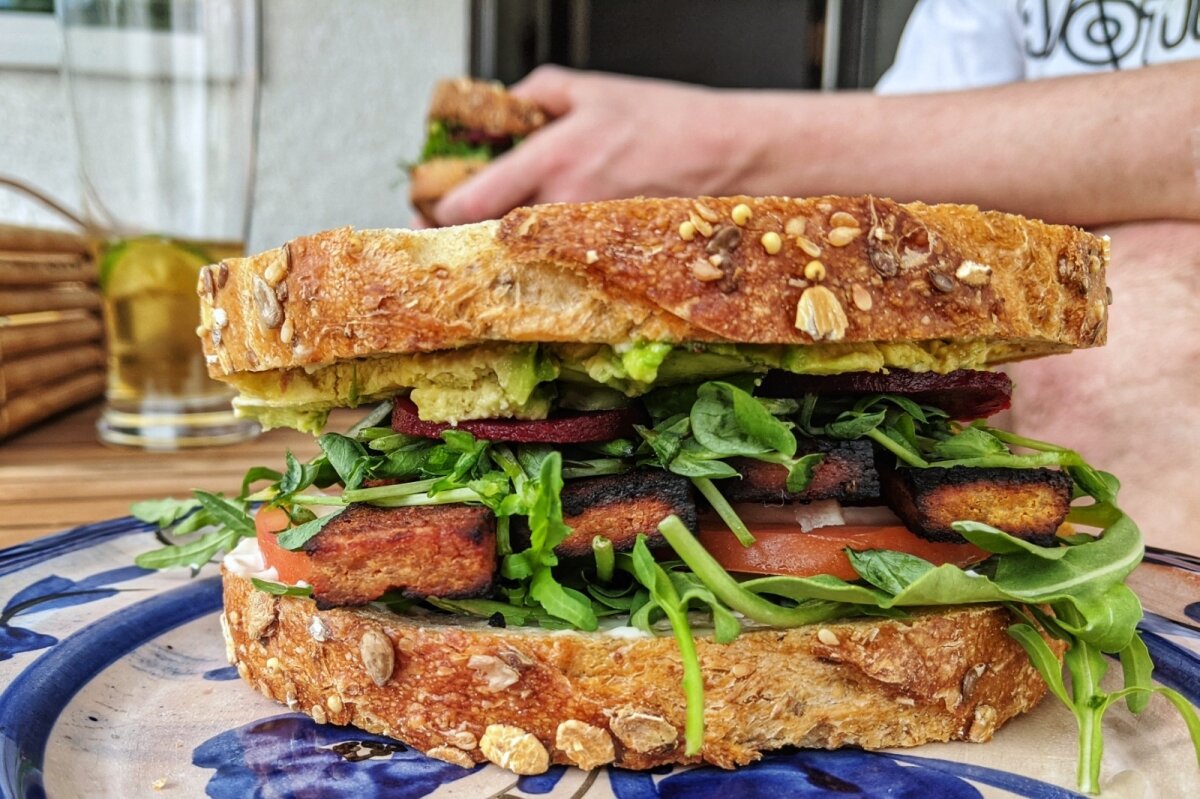3 Huge Tricks To Make Vegan Food That Tastes Amazing!
How do I make vegan food taste good and add flavor?!
Here are my biggest tips that I always use when thinking about cooking delicious vegan meals!
Find a vegan-friendly cuisine you love and learn how to make those recipes. For instance, I’ve recently tried a few new Persian recipes that are vegan friendly, and I am in love. I make them all the time now. They are packed with flavor and feel new and exciting to me.
Think of your old favorite foods and learn creative ways to make vegan versions of them! This method is one of my favorites. I have many recipes that are ‘fake-aways’ of non-vegan meals.
Think of one vegetable you absolutely love and learn new recipes that feature it! For instance, I love pumpkin, and recently I’ve found a ton of cool recipes that utilize pumpkin as a key ingredient! Pumpkin lasagna, it’s a thing!
Tip 1 - Utilize your favorite International Cuisines
I was wondering how I could make a plant-based diet taste better and be something I’m super excited about! How do I pack in the flavor with my vegan meals?
I found my answer by looking at international foods! There are so many plant-friendly diets across the world with incredible flavors we can easily recreate! Vegan Mexican burritos, Indian curries, Thai soups, Greek gyros, and so much more are awaiting you.
These are my top 5, high flavor, plant-based friendly cuisines I rotate through regularly:
Greek
Spices & Herbs: Oregano, Dill, Bay Leaves
Common Flavor Elements: Garlic, Lemon, Extra Virgin Cold-Pressed Olive Oil, and Parsley
Thai
Spices & Herbs: turmeric, peppercorns, garlic, cinnamon, cumin, cloves, and galangal (or sub ginger)
Common Flavor Elements: Coconut milk, lime leaves, red Thai chilies, cilantro, lemongrass, sweet basil, vegan fish sauce, soy sauce/tamari, peanuts
Indian
Spices & Herbs: Cardamom, Cloves, Chili, Cumin, Coriander, Ginger, Mustard Seeds, and Fenugreek.
Common Flavor Elements: Coconut milk, ginger, garlic, cilantro, tomato sauce/paste, and oils/ vegan butter
Japanese
Spices & Herbs: Sugar, Salt, Vinegar (different varieties), Soy, Miso Paste
Common Flavor Elements: Ginger, Garlic, Apple, Maple Syrup, Carrot, Ready Made Curry Paste, Sesame Oil, Seaweed
Mexican (Including Tex-Mex)
Spices & Herbs: Chili, Cumin, Smoked Paprika, Fajita Spices, Taco Seasoning, Oregano
Common Flavor Elements: Lime, Cilantro, Garlic, Diced White Onion, Jalapeno
Whether I’m creating an authentic dish from one of these countries or simply using common elements used in international cuisine, it helps me have a variety of incredible flavors in my meals and meal prep.
Tip 2 - Create Vegan Versions of Your Old Favorite Non-Vegan Foods
You might wonder, what are some of the most popular vegan foods…
Honestly, a lot of vegans cook the same things everyone else does but as a ‘vegan version.’ For instance, instead of steak and potatoes, we might cook up a simple portobello steak with mash, gravy, and asparagus. It is absolutely delicious! Or instead of a meat burger, we’ll have a decked out vegan burger!
Vegans also go nuts for cheese (nut-based cheeses that is)! Creamy, cheesy plates of pasta are just as addicting for vegan/ plant-based people.
So with that in mind, recreating meaty, seafood, and cheesy flavor is something vegans do on a regular basis! Here are the different spices, seasonings, oils, and more, that I use to recreate these delicious flavors.
Spices and Seasonings for Vegan Meaty Flavors
Steak seasoning
Pork seasoning
Chicken seasoning
Red Wine
BBQ rub (seasoning)
Vegan Butter
Garlic Granules
Fresh Cracked black pepper
Vegan beef or chicken broth
A cast-iron pan (to help sear your fake meats)
Pre-seasoned chicken breading, usually already vegan but double-check for milk products.
I always buy a cheap container of Pineapple juice to soak my tofu in before making fake chicken. Trust me, it is a game-changer.
Spices and Seasonings for Vegan Seafood Flavors
Capers/ Caper liquid
Dried Seaweed Flakes/Nori or Kelp Granules
Liquid Smoke
White Wine or Cooking Wine
Vegan Butter
Old Bay Seasoning
Maple Syrup
Salt
Garlic Granules
Onion Granules
Pepper
White Miso Paste
Spices and Seasonings for Cheesy Vegan Flavors
Plant-based Milk
Vegan Butter
Nutritional Yeast
Tapioca Flour
All-Purpose Flour
Onion Granules
Garlic Granules
Raw Cashews
Salt
Tip 3 - Experiment with your favorite vegetables!
Focus on a key ingredient, and have fun!
As mentioned before, I am really into pumpkins right now! They are so healthy and fun to cook with (I usually use pumpkin puree). I love trying to find interesting ways to incorporate pumpkin in my meals. I had found an interesting recipe that incorporated pumpkin in oatmeal fairly recently and it sent me down an interesting and wonderful path.
After that, I looked up “savory recipes with pumpkin” and saved a bunch of unique recipes that featured pumpkin in new ways that I had never tried before. It was so fun to eat a ton of new recipes featuring this vegetable in ways I would have never thought of before!
If you have a couple of favorite vegetables, I would recommend looking them up to see what kind of recipes feature them! Even if your search results bring up a lot of vegetarian recipes, don’t sweat it! It’s easy to take a vegetarian recipe and make it vegan. Simply swap the dairy products for vegan alternatives. Milk to oat milk or butter to vegan butter, etc.
This is a very fun and simple way to increase the number of vegan foods that taste amazing to you!
Enjoy eating vegan food that tastes amazing! <3


















